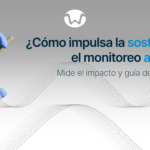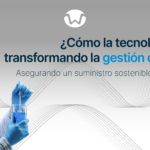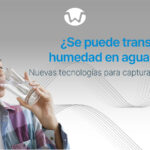
DO WE REALLY NEED TO APPLE HYDROGEOLOGICAL MODELING?
Hydrogeological modeling is subject to the specific characteristics of the study area to be evaluated (domain), such as: geology, hydrology, hydrochemistry and hydrogeology; and to the objectives and scope of the project, so it could not configure two (02) identical hydrogeological models, which despite being geographically located and not very far apart, would not generate precisely the same results.
Hydrogeological modeling has the purpose of analyzing the prediction and future behavior of the hydrogeological system. It is fundamentally based on a solid base represented by the conceptual model, which in turn requires a capacity for synthesis of the most representative variables.
The conceptual model must represent – in a descriptive and schematic way – the most important elements of the underground water system and their behavior; relying on own information (background and technical reports) and field data to search for data and concrete and specific information:
- Lithological description
- Hydraulic characteristics
- Hydrogeological units
- Inventory of surface and groundwater sources
- Hydrochemical characterization
- Hydrological factors
- Sources of anthropic influence; Recharge and / or contamination, use of water, presence of infrastructures (for example: aqueducts).
The numerical model results from converting the conceptual model into a mathematical representation, in which variables such as slope and topography, piezometric level, flow directions are included. In addition to the factors that favor such as flow, recharge and transit, and even concentrations of solutes.
ADVANTAGES:
- The conceptual model stores the real characteristics of the system that will be considered in the numerical modeling.
- Numerical modeling allows evaluating the potential effects of a project or activity on an aquifer and compromised ecosystems. It should help to sustain a contingency plan against the future predictions of the simulation.
- It allows a highly detailed understanding of the study area, history and predictive future performance.
- It makes it possible to determine the availability of water resources and provide support for the efficient management of water resources.
- Predict pollutant concentration for different time scenarios.
DISADVANTAGES:
- The quality and quantity of the records, data and information generate uncertainty in the predictive capacity of the hydrogeological model.
- The modeling software (Feflow, Modflow, Groundwater Vistas, etc.) have a cost per license, so it is considered as an informative social limitation.
- The absence of observation wells in a study area increases the uncertainty in the numerical model simulations.
- For the same problem, the dilemma is to propose different models, which would indicate different predictions. For this reason, it is recommended that during the execution of the numerical model the specialist group that developed the conceptual hydrogeological model be involved.
WES PERÚ SAC, has contributed to the development of numerical models in order to help make viable investment projects in infrastructure, hydraulic, mining and industrial.
Today we share the case of an open pit mine that required analyzing the dynamics of groundwater and identifying the changes in the hydrogeological system generated during the future expansion of a non-metallic mine.
The control volume was delimited for the horizontal (related to streams and rivers) and vertical limits, analyzing the interaction between the saturated zone and the exploitation zone.
The boundary conditions (fixed level, fixed and / or mixed flow), the inputs and outputs of the system, the distributed zoning of the recharge by rainwater infiltration, in the model area were fixed and established.
Permeability data (determined in the conceptual model) were assigned to each hydrogeological unit, giving way to the calibration of the model in terms of water levels and flow, determining the permeabilities and entered variables presented coherence with respect to the records, tests and investigations, mainly obtained in the field.
CONCLUSIONS:
It was evidenced that there is currently no interference from excavation operations on groundwater.
During the expansion of the pit, specific changes in groundwater levels could be generated; however, the net recharge is not affected.
The expansion of some components over time will not be a problem for the underground aquifer system, since the water level is deep enough that it cannot be affected.




